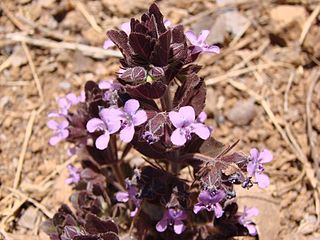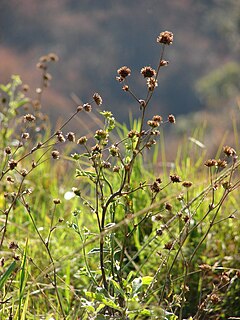Related Research Articles

Ángel Cabrera is an Argentine professional golfer who plays on both the European Tour and PGA Tour. He is known affectionately as "El Pato" in Spanish ("The Duck") for his waddling gait. He is a two-time major champion, with wins at the U.S. Open in 2007 and the Masters in 2009; he was the first Argentine and South American to win either. He also lost in a sudden death playoff at the Masters in 2013.

Leopardus is a genus comprising eight species of small cats native to the Americas. This genus is considered the oldest branch of a genetic lineage of small cats in the Americas whose common ancestor crossed the Bering land bridge from Asia to North America in the late Miocene.

Ischigualasto Provincial Park, also called Valle de la Luna, due to its moon like appearance, is a provincial protected area in the north-east of San Juan Province, north-western Argentina, limiting to the north with the Talampaya National Park, in La Rioja Province. Both areas belong to the same geological formation, the Ischigualasto Formation . Established on 3 November 1971, the park has an area of 60,370 ha.

Amygdalodon was a genus of basal sauropod from the Middle Jurassic of Argentina. The type species is Amygdalodon patagonicus. Fossils of Amygdalodon have been found in the Toarcian Cerro Carnerero Formation of the Jurassic. Very little is known about it, but it is one of the few Jurassic dinosaurs from South America found thus far.

Cavia is a genus in the subfamily Caviinae that contains the rodents commonly known as guinea pigs or cavies. The best-known species in this genus is the domestic guinea pig, Cavia porcellus, an important meat animal in South America and a common household pet outside of that continent.

Nassauvia is a genus of flowering plants in the Nassauvia tribe within the sunflower family. It native to Argentina, Bolivia, Chile and the Falkland Islands.
Oplismenopsis is a genus of South American plants in the grass family. The only known species is Oplismenopsis najada, native to southern Brazil, Uruguay, and northeastern Argentina.

Heterosperma is a genus of flowering plants in the sunflower family, native to North and South America.
Holocheilus is a genus of flowering plants in the daisy family.
Urmenetea is a genus of South American plants in the mutisia tribe within the daisy family.
Synedrellopsis is a genus of South American plants in the sunflower tribe within the daisy family.
Paleaepappus is a genus of flowering plants in the aster tribe within the sunflower family.
Aylacophora is a genus of flowering plants in the daisy family.

Escalera's bat is a European bat in the genus Myotis, found in Spain, Portugal, and far southern France.
Tagetes argentina is a South American plant species in the sunflower family. It is found in Argentina and Bolivia on granitic and rhyolitic soils.
Tweedia is a genus of flowering plants in the family Apocynaceae, first described as a genus in 1835. The genus is native to South America. An ornamental plant, Oxypetalum coeruleum, formerly included in this genus is commonly referred to as "tweedia".
- Tweedia andina(Phil.) G.H.Rua - Chile
- Tweedia aucaensisG.H. Rua - Argentina
- Tweedia australis(Malme) C. Ezcurra - Argentina
- Tweedia birostrata(Hook. & Arn.) Hook. & Arn. - Chile
- Tweedia brunonisHook. & Arn. - Argentina, Bolivia, Paraguay
- Tweedia echegarayi(Hieron.) Malme - Argentina
- Tweedia solanoides(Hook. & Arn.) Chittenden - Argentina, Brazil, Paraguay, Uruguay

Celtis ehrenbergiana, called the desert hackberry or spiny hackberry, is a plant species that has long been called C. pallida by many authors, including in the "Flora of North America" database. It is native to Arizona, Florida, New Mexico and Texas, and to Latin America as far south as central Argentina. It grows in dry locations such as deserts, brushlands, canyons, mesas and grasslands.

Marsypianthes is a genus of flowering plants in the family Lamiaceae, first described in 1833. It is native to South America, Central America, the West Indies, and southern Mexico.
- Marsypianthes burchelliiEpling - Brazil
- Marsypianthes chamaedrys(Vahl) Kuntze. - from southern Mexico and the West Indies south to Argentina
- Marsypianthes foliolosaBenth. - Brazil
- Marsypianthes hassleriBriq. - Paraguay, southern Brazil, Misiones Province of Argentina
- Marsypianthes montanaBenth. - Brazil

Elephantopus mollis, common names tobacco weed, and soft elephantsfoot, is a tropical species of flowering plant in the sunflower family.
Hypochaeris microcephala, the smallhead cat's ear, is a species of plants in the dandelion tribe within the sunflower family. It is native to South America and naturalized in parts of North America.
References
- ↑ Cabrera, Angel Lulio. 1951. Boletín de la Sociedad Argentina de Botánica 4: 129
- ↑ Tropicos, Huarpea Cabrera
- ↑ Flann, C (ed) 2009+ Global Compositae Checklist
- ↑ Zuloaga, F. O., O. Morrone, M. J. Belgrano, C. Marticorena & E. Marchesi. (eds.) 2008. Catálogo de las plantas vasculares del Cono Sur. Monographs in systematic botany from the Missouri Botanical Garden 107(1–3): i–xcvi, 1–3348